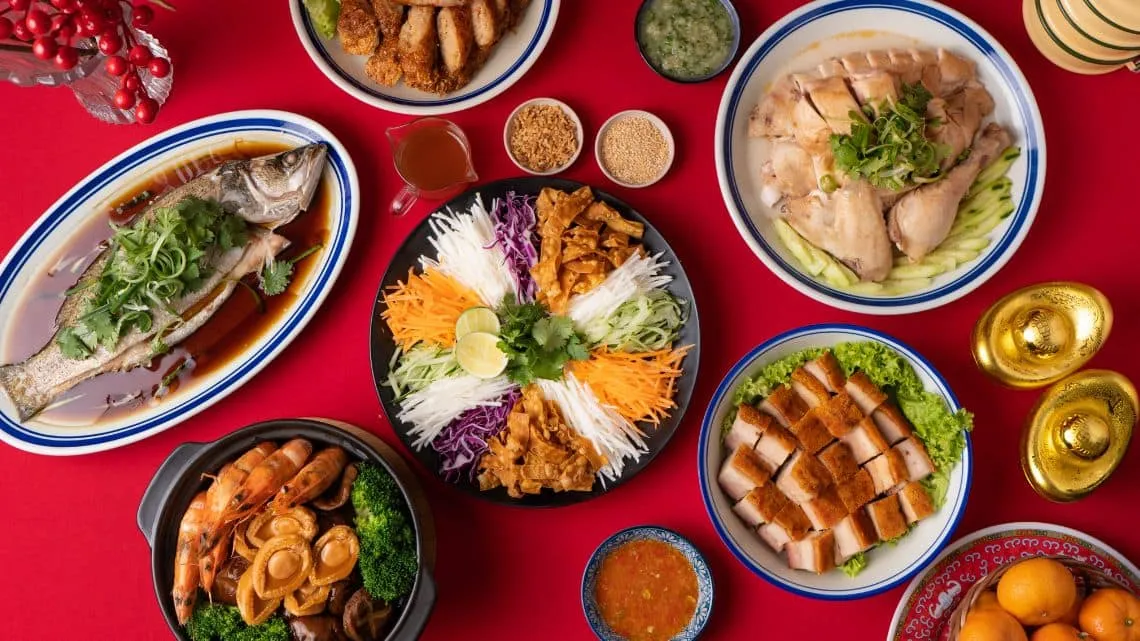Youth Voices: College Students’ Fusion Recipes with 10 Ingredients or Less
Discover 6 creative fusion recipes from Chicago college students that blend cultural traditions with budget-friendly shopping. Each recipe uses 10 ingredients or less and costs under $15 to make.


Youth Voices: College Students' Fusion Recipes with 10 Ingredients or Less
College students are some of the most creative cooks out there. With limited budgets, tiny kitchens, and busy schedules, they've mastered the art of fusion cooking—blending flavors from their heritage with whatever's available at the local Jewel-Osco. We reached out to students across Chicago's colleges to share their most inventive recipes that use 10 ingredients or less and cost under $15 to make.
These aren't just budget meals; they're cultural celebrations happening in dorm rooms, shared apartments, and cramped studio kitchens throughout the city. Here's what Chicago's college students are cooking up.
The Rise of Dorm Room Fusion
"When you're homesick and broke, you get creative fast," says Maria Santos, a junior at UIC. "My abuela's recipes needed a college makeover, so I started mixing Mexican flavors with whatever was on sale."
This sentiment echoes across Chicago's campuses. Students from diverse backgrounds are creating new traditions, one fusion dish at a time. These recipes represent more than just food—they're stories of adaptation, creativity, and community.
Recipe 1: Korean-Mexican Breakfast Bowl
Created by Kevin Park, Northwestern University
Total Cost: $12 for 4 servings Prep Time: 15 minutes
Ingredients (9 total):
- 4 eggs
- 2 cups cooked white rice (day-old works great)
- 1 can black beans, drained
- 1 cup shredded Mexican cheese blend
- 2 tablespoons soy sauce
- 1 tablespoon sesame oil
- 1 packet taco seasoning
- 1 avocado, sliced
- Sriracha to taste
Kevin's Story:
"My Korean mom's fried rice meets my Mexican roommate's breakfast burritos. It's become our Sunday morning tradition."
Instructions:
- Heat sesame oil in a large pan over medium heat
- Add day-old rice, breaking up clumps with a spatula
- Stir in soy sauce and half the taco seasoning
- Push rice to one side, scramble eggs on the other side
- Mix everything together, add black beans
- Top with cheese, avocado, and sriracha
Jewel-Osco Shopping Tip: Buy the family pack of eggs and rice in bulk—both keep well and stretch multiple meals.
Recipe 2: Italian-Indian Pasta Curry
Created by Priya Patel, University of Chicago
Total Cost: $11 for 3 servings Prep Time: 20 minutes
Ingredients (8 total):
- 12 oz penne pasta
- 1 jar marinara sauce
- 1 can coconut milk
- 1 teaspoon curry powder
- 1 bag frozen peas
- 1 onion, diced
- 2 cloves garlic, minced
- Parmesan cheese for serving
Priya's Story:
"My Italian boyfriend introduced me to pasta, but I needed the comfort of curry spices. This dish bridges both our cultures."
Instructions:
- Cook pasta according to package directions
- Sauté onion and garlic until fragrant
- Add curry powder, cook 30 seconds
- Stir in marinara sauce and coconut milk
- Add frozen peas, simmer 5 minutes
- Toss with drained pasta and serve with Parmesan
Budget Hack: Use store-brand pasta and sauce—Jewel's Signature Select brand works perfectly and costs 30% less.
Recipe 3: Filipino-American Fried Rice Pizza
Created by Miguel Rodriguez, DePaul University
Total Cost: $13 for 4 servings Prep Time: 25 minutes
Ingredients (10 total):
- 1 store-bought pizza dough
- 2 cups cooked jasmine rice
- 4 strips bacon, chopped
- 3 eggs, beaten
- 1 cup mozzarella cheese
- 2 green onions, sliced
- 2 tablespoons soy sauce
- 1 tablespoon garlic powder
- 1 red bell pepper, diced
- Hot sauce for drizzling
Miguel's Story:
"My Filipino mom's garlic fried rice meets Chicago deep-dish pizza. It's weird but it works—trust me."
Instructions:
- Preheat oven to 450°F
- Cook bacon in a large pan until crispy
- Add bell pepper, cook 3 minutes
- Add rice, soy sauce, and garlic powder
- Push rice mixture to sides, scramble eggs in center
- Mix everything together
- Spread mixture on pizza dough, top with cheese
- Bake 12-15 minutes until golden
- Top with green onions and hot sauce
Shopping Smart: Buy pre-made pizza dough from Jewel's bakery section—it's fresh, affordable, and saves time.
Recipe 4: Middle Eastern-Mexican Hummus Quesadilla
Created by Layla Hassan, Columbia College Chicago
Total Cost: $9 for 2 large quesadillas Prep Time: 10 minutes
Ingredients (7 total):
- 4 large flour tortillas
- 1 container hummus (any flavor)
- 1 cup Mexican cheese blend
- 1 cucumber, diced
- 1 tomato, diced
- 1/4 cup red onion, diced
- Za'atar seasoning
Layla's Story:
"When you're Lebanese and your roommate is Mexican, the kitchen becomes a beautiful fusion laboratory."
Instructions:
- Spread hummus on two tortillas
- Add cheese, cucumber, tomato, and onion
- Sprinkle with za'atar
- Top with remaining tortillas
- Cook in a pan 3-4 minutes per side until crispy
- Cut into wedges and serve
Pro Tip: Make your own za'atar by mixing dried thyme, sesame seeds, and sumac—all available in Jewel's international aisle.
Recipe 5: Thai-Soul Food Peanut Butter Noodles
Created by Jasmine Washington, Chicago State University
Total Cost: $10 for 3 servings Prep Time: 15 minutes
Ingredients (9 total):
- 12 oz egg noodles
- 1/3 cup peanut butter
- 2 tablespoons soy sauce
- 1 tablespoon honey
- 1 teaspoon garlic powder
- 1/4 teaspoon cayenne pepper
- 1 bag coleslaw mix
- 2 green onions, sliced
- 1/4 cup peanuts, crushed
Jasmine's Story:
"My grandmother's love for peanuts in everything meets Thai pad thai. It's soul food with a Southeast Asian twist."
Instructions:
- Cook noodles according to package directions
- Whisk together peanut butter, soy sauce, honey, garlic powder, and cayenne
- Toss hot noodles with peanut sauce
- Add coleslaw mix, toss until slightly wilted
- Garnish with green onions and crushed peanuts
Money-Saving Tip: Buy the big jar of peanut butter—it lasts for months and works in both sweet and savory dishes.
The Science of Student Fusion
Dr. Rachel Kim, a food anthropologist at Northwestern, explains the phenomenon: "College students are creating new American cuisine in real-time. They're taking the flavors of home and adapting them to American grocery stores and kitchens. It's cultural preservation through innovation."
These recipes represent more than just cheap meals—they're edible stories of the American immigrant experience, told through the voices of Generation Z.
Shopping Strategies from Student Chefs
Our featured students shared their grocery shopping wisdom:
The "International Aisle Investment"
"I buy one new spice or sauce from the international aisle each shopping trip," says Kevin Park. "It's usually under $3 and transforms multiple meals."
The "Bulk Buy Buddy System"
"My roommates and I split bulk purchases," explains Priya Patel. "We share rice, oil, and spices. Everyone saves money."
The "Leftover Remix Challenge"
"I never throw away food," states Miguel Rodriguez. "Yesterday's dinner becomes today's pizza topping."
Budget Breakdown: How Students Make It Work
These creative cooks have mastered the art of strategic shopping:
Average weekly grocery budget: $25-35 Favorite shopping day: Sunday (for weekly sales) Must-have pantry items: Rice, eggs, onions, garlic, soy sauce Biggest splurge: Quality cheese or fresh herbs Best savings hack: Store loyalty programs and student discounts
Recipe 6: Polish-Asian Pierogi Ramen
Created by Anna Kowalski, Loyola University Chicago
Total Cost: $8 for 2 servings Prep Time: 20 minutes
Ingredients (8 total):
- 1 package frozen pierogis
- 2 packets chicken ramen (discard flavor packets)
- 2 eggs
- 2 cups chicken broth
- 1 tablespoon butter
- 1/2 onion, sliced
- 1 green onion, chopped
- Soy sauce to taste
Anna's Story:
"My babcia's pierogis in a Japanese-style broth. It sounds crazy but it's comfort food perfection."
Instructions:
- Boil pierogis according to package directions
- In another pot, bring chicken broth to a boil
- Add ramen noodles (without seasoning), cook 3 minutes
- Pan-fry cooked pierogis with butter and onions until golden
- Soft-boil eggs for 6 minutes
- Serve ramen in bowls, top with pierogis, eggs, and green onions
- Season with soy sauce
The Community Aspect
These fusion recipes have created micro-communities on campuses. Students organize "fusion potlucks" where everyone brings a dish representing their cultural mashup. Instagram accounts like @UChicagoFusion and @DePaulEats showcase these creative combinations, building communities around shared culinary adventures.
"Food is how we connect," says Layla Hassan. "When my Korean friend tries my hummus quesadilla and then teaches me to make kimchi grilled cheese, we're building bridges."
Tips for Creating Your Own Fusion Recipes
Based on our student chefs' advice:
Start with Familiar Flavors
"I always begin with something I know I love," suggests Maria Santos. "Then I add one new element."
Think About Textures
"Crunchy with soft, hot with cool—contrasts make dishes interesting," notes Kevin Park.
Don't Fear Failure
"My first fusion attempts were disasters," laughs Miguel Rodriguez. "But each mistake taught me something."
Keep a Flavor Journal
"I write down what works and what doesn't," advises Priya Patel. "It's like a science experiment."
The Future of College Fusion
These student innovators are creating the future of American cuisine. Their recipes reflect a generation that sees food boundaries as suggestions rather than rules. They're proving that with creativity, cultural pride, and smart shopping, you can eat amazingly well on a college budget.
As Jasmine Washington puts it: "We're not just surviving college—we're creating traditions that we'll carry forward. These recipes will be what we teach our own kids someday."
Your Turn to Create
Inspired to try fusion cooking? Start with these student-tested principles:
- Shop your heritage first - Visit Jewel's international aisle for familiar flavors
- Embrace the American grocery store - Learn what substitutions work
- Share with friends - The best fusion happens in community
- Document your experiments - Take photos and notes
- Don't take yourself too seriously - Food should be fun
Remember, the best fusion recipes come from the heart, not just the cookbook. These Chicago students have shown that with 10 ingredients or less, a tight budget, and an open mind, you can create dishes that honor your heritage while embracing your new home.
What fusion creation will you try next?